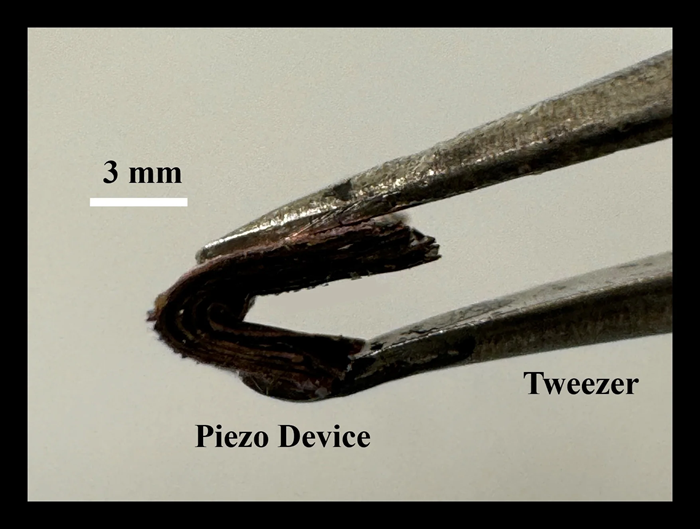Reviewed by Lexie CornerNov 21 2024
Researchers at the University of Waterloo have created a compact, wearable generator to address the growing demand for sustainable, clean energy. This technology is also scalable for use in larger machines. The study was published in the journal Nature Communications.
 The new generator contains materials that are flexible, energy-efficient, and relatively less expensive. Image Credit: University of Waterloo.
The new generator contains materials that are flexible, energy-efficient, and relatively less expensive. Image Credit: University of Waterloo.
This breakthrough technology, which captures electricity from vibrations or small body movements, could enable devices to charge while in use, such as powering a laptop while typing or charging a smartphone during a morning run.
This is a real game-changer. We have made the first device of its kind that can power electronics at low cost and with unprecedented efficiency.
Dr. Asif Khan, Lead Researcher and Postdoctoral Fellow, Department of Electrical and Computer Engineering, University of Waterloo
The device uses the piezoelectric effect, which generates electrical energy when pressure is applied to materials like crystals and certain ceramics. Piezoelectric materials are already used in various sensing technologies, including sonar, ultrasonic imaging, and microwave devices.
Those older materials are brittle, expensive, and have a limited ability to generate electricity. The materials we’ve created for the new generator are flexible, more energy-efficient, and cost less.
Dr. Dayan Ban, Professor and Researcher, Institute for Nanotechnology, University of Waterloo
In addition to Khan and Ban, the research team comprises two other professors from the University of Waterloo, one professor from the University of Toronto, and their respective research groups.
The researchers have filed a patent and are collaborating with a Canadian company to commercialize their generator. They plan to use it in aviation to power systems on planes that monitor the status of safety equipment.
Journal Reference:
Khan, A. A., et al. (2024). Breaking dielectric dilemma via polymer functionalized perovskite piezocomposite with large current density output. Nature Communications. doi.org/10.1038/s41467-024-53846-6.